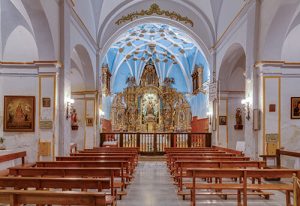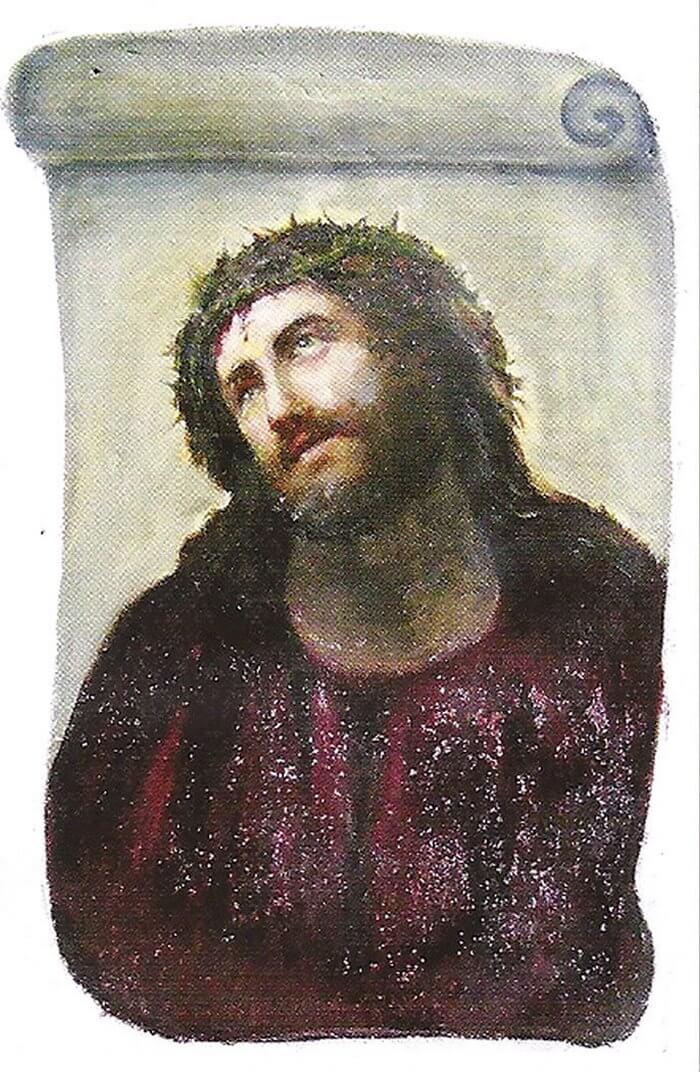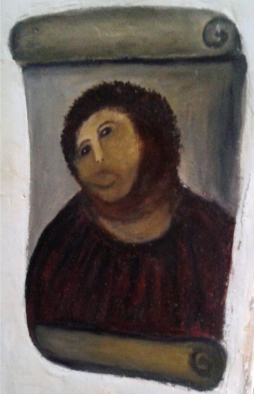The Accidental Art Restoration Disaster: The Tale of Monkey Christ
The story of ‘Monkey Christ’ reminds us that art’s true impact often lies not in its technical perfection, but in how it resonates with audiences and shapes cultural conversation. Whether an artwork is celebrated for its beauty or mocked for its imperfections, it has the power to provoke thought, spark debate, and capture public imagination. In this case, a well-intentioned restoration mishap transformed a fading fresco into a global phenomenon, drawing tourists, inspiring memes, and even generating merchandise. It stands as a lasting testament to how even unintentional creations can carve out a unique place in history and leave a profound, if unexpected, cultural legacy.

By Diego Delso, CC BY-SA 4.0
The Original Fresco: Ecce Homo
The original fresco, titled Ecce Homo (“Behold the Man”), was created by Spanish artist Elías García Martínez in the early 20th century. Painted directly onto the church wall of the Sanctuary of Mercy in the small town of Borja, the artwork depicted a sorrowful Jesus Christ crowned with thorns, gazing heavenward in quiet suffering. Though it was not widely regarded as a significant masterpiece by art historians or critics, the fresco carried immense sentimental value for the local congregation and town residents. It had become a familiar presence within the church, often associated with personal prayers, memories, and community gatherings.
Over the decades, however, the fresco began to show visible signs of aging, with moisture damage, flaking paint, and fading details threatening to erase its gentle expression. Despite its modest artistic reputation, Ecce Homo remained a beloved fixture in Borja, quietly witnessing generations of parishioners come and go.

By Elías García Martínez, Public Domain, Link
The Well-Intentioned Attempt That Created ‘Monkey Christ’
In 2012, 81-year-old Cecilia Giménez, a devout parishioner and longtime resident of Borja, took it upon herself to restore the aging fresco. Deeply concerned by its deteriorating state and fading details, she approached the church authorities, hoping to preserve the cherished religious image for future generations. Given the fresco’s sentimental value to the local community, Giménez believed her efforts would be a heartfelt contribution. Unfortunately, due to a lack of professional restoration training and limited resources, her well-intentioned attempt led to disastrous results.
The original, delicate depiction of Christ was transformed beyond recognition, with the facial features morphing into a blurred, lopsided image that resembled a woolly primate more than the Messiah. It didn’t take long for the internet to seize upon the bizarre transformation, quickly dubbing the altered fresco “Monkey Christ” and launching it into viral infamy.

By Cecilia Giménez, Link
The Aftermath and Global Reaction
News of the botched restoration spread rapidly through social media and online forums. Memes and parodies of the “Monkey Christ” flooded the internet, with people comparing the altered fresco to everything from cartoon monkeys to pop culture icons. International news outlets picked up the story, and art critics weighed in on the situation with a mix of horror and humor.
Despite the initial outrage, the incident eventually brought unexpected benefits to Borja. The small town experienced a surge in tourism as curious visitors from around the world traveled to see the infamous fresco firsthand. Local businesses capitalized on the publicity, offering themed souvenirs, guided tours, and exhibitions about the incident.
This extraordinary tale also sparked conversations about art preservation, the importance of professional restoration, and the unpredictable consequences of good intentions gone awry. It has since inspired documentaries, academic papers, and discussions in art circles, cementing its place in popular culture history.
Would you like to learn more about the expanding notions of art or the role of symbolism in contemporary culture? Visit our blog for more intriguing stories.



